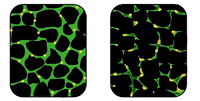
Photo from wikipedia
Purpose: Patients with Duchenne muscular dystrophy (DMD) or spinal muscular atrophy (SMA), both neuromuscular diseases, sustain spinal scoliosis in the course of their disease. To reduce the concomitant major morbidity… Click to show full abstract
Purpose: Patients with Duchenne muscular dystrophy (DMD) or spinal muscular atrophy (SMA), both neuromuscular diseases, sustain spinal scoliosis in the course of their disease. To reduce the concomitant major morbidity and to improve their quality of life, patients require surgical spine stabilization. This can lead to complications like respiratory, cardiac or neurological complications or wound healing disorders (WHD). To find out the different complexities and risk factors increasing the chance to develop a WHD, the inpatient database was analyzed. Methods: We performed a retrospective statistical study. Therefore, we analyzed the inpatient database of 180 patients (142 DMD and 38 SMA patients). The focus was on WHD. To figure out the risk factors leading to WHD, we conducted a logistic regression. Results: Cardiac complications occurred most frequently, followed by pulmonary complications and neurological lesions. Fifty-seven out of 180 patients developed a WHD. In 23 cases the WHD was aseptic, in the other 34 cases dermal organisms, Pseudomonas species and intestinal organisms were responsible. By means of the logistic regression, we were able to identify two more risk factors, in addition to diagnosis and gender, for developing a WHD in our patients: the year of surgery and the direction of pelvic tilt. Conclusions: Most common complications following scoliosis surgery are respiratory and cardiac complications. WHD is a severe complication that implies a prolonged therapy. Some risk factors for developing WHD could be identified in this analysis. Specifically, these were the date of surgery and the direction of pelvic tilt.
Journal Title: International Journal of Neuroscience
Year Published: 2017
Link to full text (if available)
Share on Social Media: Sign Up to like & get
recommendations!